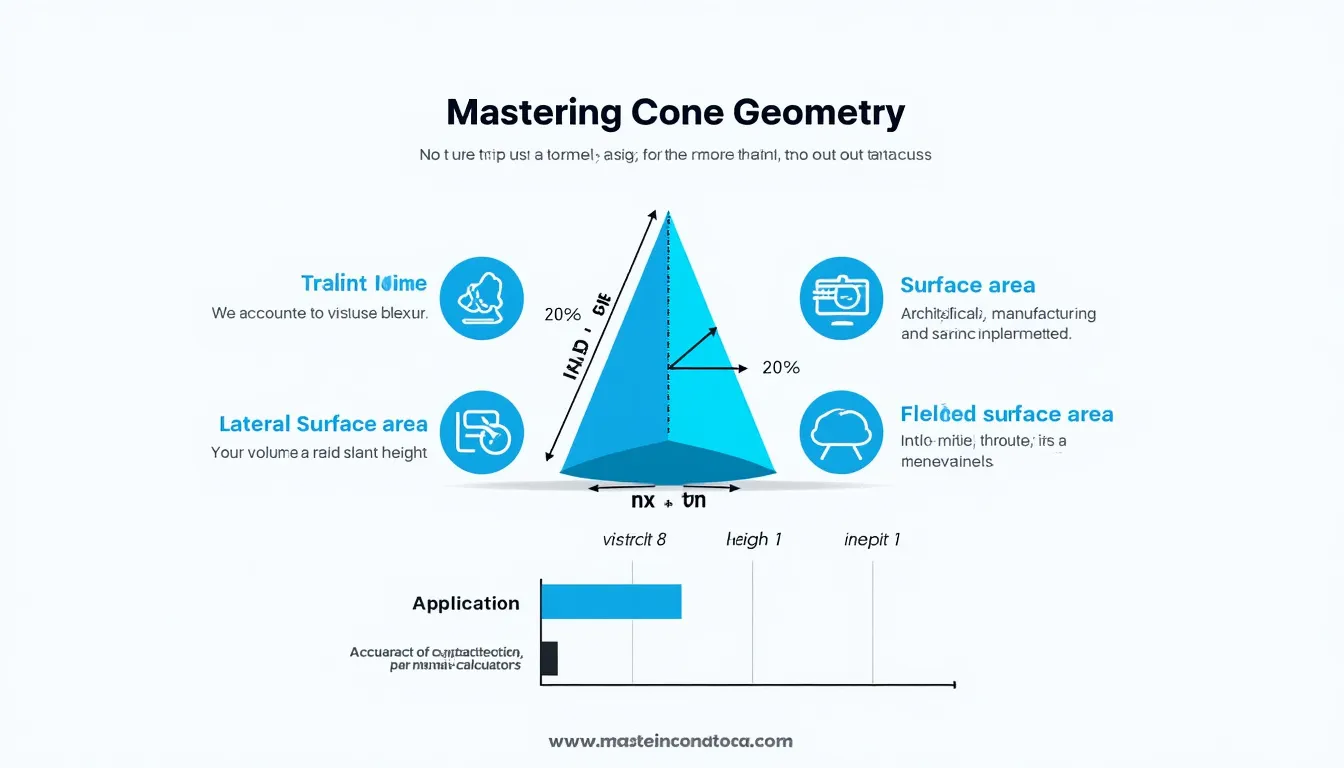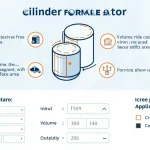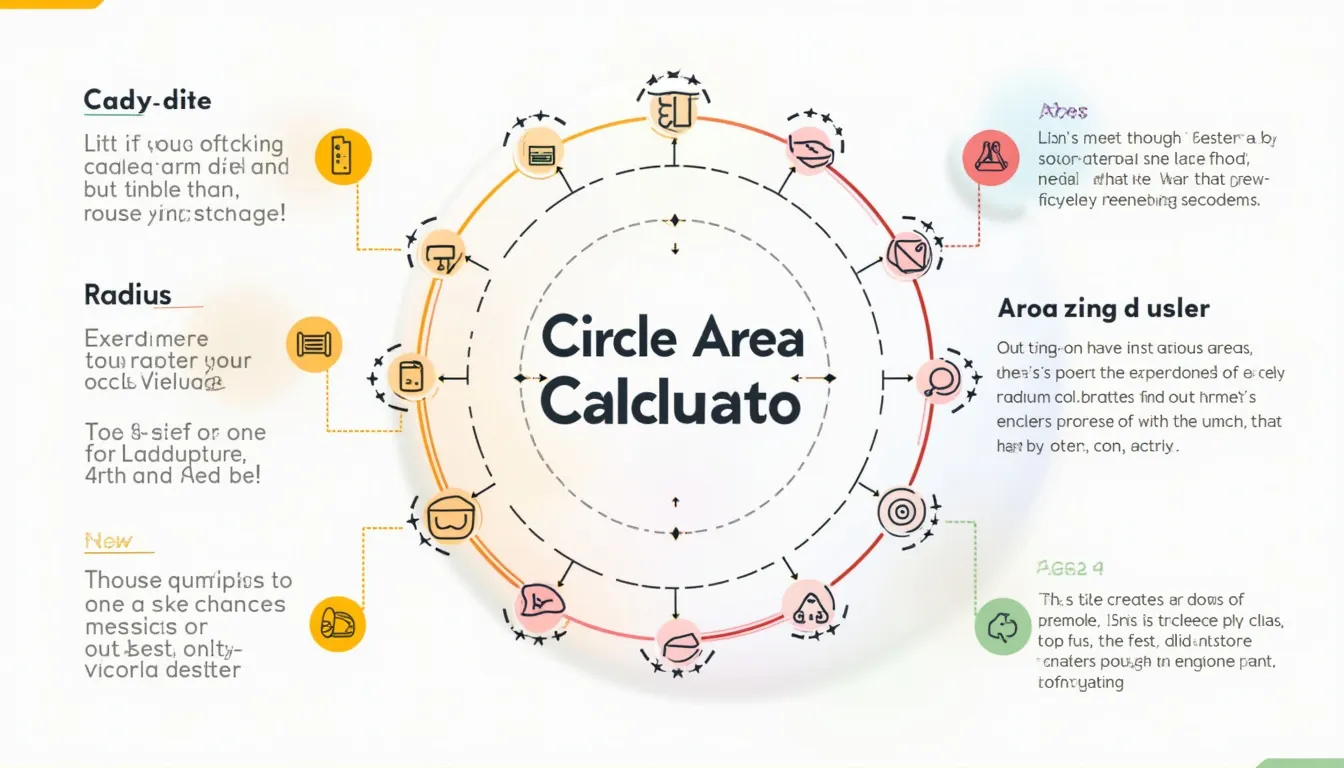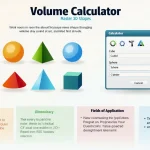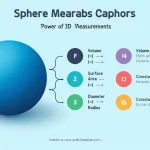Cone Calculator
How to Use the Cone Calculator Effectively
Our Cone Calculator is designed for simplicity and accuracy, allowing you to quickly compute essential cone measurements. To use the tool effectively, follow these easy steps:
- Enter the radius of the cone’s base in the “Radius” field. For example, try inputs like 4.5 or 10.25 units.
- Input the height of the cone in the “Height” field. Sample values could be 12 or 7.9 units.
- Click the “Calculate” button to generate detailed results instantly.
- Review the output displaying volume, surface area, diameter, lateral surface area, slant height, and base area—all calculated accurately.
Tips: Ensure both radius and height values are positive numbers to receive accurate calculations. If invalid inputs are provided, the calculator will notify you with an error message.
What Is the Cone Calculator? Definition, Purpose, and Benefits
A cone is a three-dimensional geometric figure characterized by a circular base that tapers smoothly to a single apex point. Cones appear frequently in nature and practical applications—from everyday objects like ice cream cones to complex architectural designs.
The Cone Calculator is an interactive tool created to simplify and automate complex geometric calculations related to cones. By entering basic measurements such as radius and height, users can instantly obtain a wide range of important cone properties without manual computation.
Key Advantages of Using Our Cone Calculator
- Quick results: Get multiple cone measurements at once, saving time.
- Accurate calculations: Minimizes human error by relying on proven geometric formulas.
- Comprehensive output: Access volume, surface area, lateral surface area, base area, slant height, and diameter in a single place.
- Easy to use: Designed with a user-friendly interface suitable for students, educators, engineers, and hobbyists alike.
- Educational enhancement: Helps in understanding correlations between different geometric properties of cones.
Example Calculations Demonstrating the JavaScript Cone Calculator
To illustrate how the calculator works behind the scenes, here are examples of the core calculations based on the radius r and height h you input:
1. Volume of the Cone
The formula for the volume V is:
$$V = \frac{1}{3} \pi r^2 h$$For example, if r = 5 units and h = 9 units:
$$V = \frac{1}{3} \pi (5)^2 \times 9 = 235.62 \text{ units}^3 \quad (\text{approx})$$2. Surface Area
Surface area SA combines the base and the lateral curved surface, calculated as:
$$SA = \pi r \left(r + \sqrt{h^2 + r^2}\right)$$For r = 5 and h = 9:
$$SA = \pi \times 5 \times \left(5 + \sqrt{9^2 + 5^2}\right) = 254.47 \text{ units}^2 \quad (\text{approx})$$3. Lateral Surface Area
The lateral surface area LSA only considers the curved surface:
$$LSA = \pi r \sqrt{h^2 + r^2}$$Example calculation when r = 5 and h = 9:
$$LSA = \pi \times 5 \times \sqrt{9^2 + 5^2} = 161.64 \text{ units}^2 \quad (\text{approx})$$4. Slant Height
The slant height s is the distance from the apex to the base circumference:
$$s = \sqrt{h^2 + r^2}$$For r = 5 and h = 9, the slant height is:
$$s = \sqrt{9^2 + 5^2} = 10.30 \text{ units} \quad (\text{approx})$$5. Base Area
The base area A is the area of the circular base:
$$A = \pi r^2$$For example, if r = 5:
$$A = \pi \times 5^2 = 78.54 \text{ units}^2 \quad (\text{approx})$$Why Use the Cone Calculator: Practical Applications and Use Cases
This versatile Cone Calculator serves multiple user needs across diverse fields. Below are some common use cases demonstrating its value:
1. Educational Support for Students and Teachers
Students learning geometry can verify homework calculations and develop a stronger intuitive grasp of cone properties by experimenting with different input values. Teachers can also use the tool during lessons to provide instant examples and visual aid.
2. Engineering and Architectural Design
Professionals designing conical components—such as funnels, roofs, or storage tanks—benefit from swift and reliable computations. The calculator aids in material estimation, volume capacity assessment, and structural planning.
3. Scientific Research and Environmental Studies
Researchers analyzing natural conical structures like volcanic cones or erosion formations can quickly calculate surface areas and volumes, facilitating more precise data collection and modeling.
4. Product Development in Manufacturing and Food Industry
From designing ice cream cones to manufacturing conical parts, businesses save time and optimize resources by using the calculator for quick estimations of volume, surface area, and material requirements.
Additional Insights: Frequently Asked Questions About Cone Geometry Calculations
Q1: What is the difference between surface area and lateral surface area?
Surface area includes the total area of the cone’s curved surface plus its circular base. In contrast, lateral surface area accounts only for the curved side, excluding the base.
Q2: Can I use this calculator for truncated cones (frustums)?
No, this calculator is specifically designed for full cones. Calculations for truncated cones require different inputs and formulas.
Q3: Why is knowing the slant height useful?
Slant height helps determine the length of materials like fabric or metal needed to create the cone’s curved surface. It’s also crucial in calculating surface areas.
Q4: How precise are the calculator’s outputs?
Results are computed using standard formulas and presented to two decimal places. The accuracy depends on the precision of the radius and height inputs you provide.
Q5: Is this tool suitable for academic use?
Absolutely, it is a reliable aid for learning, homework verification, and understanding cone geometry, though always adhere to your institution’s policies on calculator use.
Q6: Are these formulas valid for cones of any size?
Yes, as long as the radius and height are positive values, the calculator’s formulas apply reliably regardless of the cone’s dimensions.
Please note: While every effort is made to ensure the accuracy of this tool, we cannot guarantee that outputs are always 100% correct or free from errors. Use results as a guide and verify critical calculations independently when necessary.
Conclusion: Strengthen Your Geometric Skills with the Cone Calculator
Our intuitive Cone Calculator empowers users to handle complex geometry problems with ease, providing instant, accurate results for multiple cone measurements. Whether you’re a student, educator, engineer, or design professional, this tool enhances your ability to calculate and understand the properties of cones.
- Save time with automated calculations for volume, surface area, slant height, and more.
- Improve accuracy by eliminating manual errors in geometric computations.
- Gain insight through comprehensive data that illustrates how changing dimensions affect cone properties.
- Use easily with a clear, accessible interface suitable for all skill levels.
- Apply practically in education, engineering, manufacturing, environmental science, and design projects.
Explore the Cone Calculator today to deepen your understanding of conical shapes and revolutionize how you approach geometry-related challenges. Play with different values to see instant results and unlock new perspectives on three-dimensional geometry.
Is this tool helpful?
Important Disclaimer
The calculations, results, and content provided by our tools are not guaranteed to be accurate, complete, or reliable. Users are responsible for verifying and interpreting the results. Our content and tools may contain errors, biases, or inconsistencies. Do not enter personal data, sensitive information, or personally identifiable information in our web forms or tools. Such data entry violates our terms of service and may result in unauthorized disclosure to third parties. We reserve the right to save inputs and outputs from our tools for the purposes of error debugging, bias identification, and performance improvement. External companies providing AI models used in our tools may also save and process data in accordance with their own policies. By using our tools, you consent to this data collection and processing. We reserve the right to limit the usage of our tools based on current usability factors.
